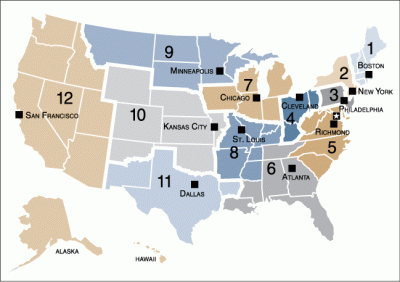Beef prices are projected to continue increasing as U.S. beef production declines with no signs of a cattle herd rebuild. Additionally, cheap beef may soon become further out of reach…
Low Commodity Prices Hurting Farm Income Outlook
Successful Farming’s Chuck Abbott reported Thursday that “farmers are on track to harvest some of their largest corn and soybean crops ever, but the ongoing decline in commodity prices is putting farm income in question, said the Beige Book issued by the Federal Reserve Board on Wednesday.”
“Regional Fed banks in Chicago and Minneapolis said the farm income outlook had weakened in recent weeks, while the Kansas City Fed said agricultural conditions in its district ‘faced headwinds from weak crop prices,'” Abbott reported.

The following are the July Beige Book’s observations pertaining to the U.S. agricultural economy:
Sixth District — Atlanta
“Agriculture conditions improved slightly in recent weeks. Cattle farmers reported strong sales resulting from limited national supply. Poultry sales strengthened amid high beef prices, and poultry farmers expressed increased optimism about the remainder of the year. Dairy farmers saw strong demand and higher sales prices and were confident looking forward, but low cattle supply limited growth opportunities. However, row crops including cotton, continued to see weak demand. Soft grain prices hurt growers but benefitted farmers buying feed. Florida citrus farmers struggled as harvests were disappointing, leading to expectations of more growers exiting the market over the next year.”
Seventh District — Chicago
Contacts indicated that farmers were slow to sell crops from storage and were holding back on selling ahead from their anticipated fall harvest in part because of low prices.
“Farm income expectations for the District waned in late May and June as key crop prices declined. Although recent flooding covered some acres, corn and soybean planting recovered from earlier weather-related challenges across much of the District, and overall crop conditions were off to a better start than in recent years. Corn, soybean, and wheat prices were lower, with a strong wheat harvest already underway. A contact noted that an early wheat harvest would free up fields for second crop soybeans sooner than usual, allowing the soybeans to mature for longer. Milk and egg prices were higher, while hog prices faltered. Cattle prices were flat at a high level.”
Eighth District — St. Louis
“Overall agriculture conditions have remained stable since our previous report. The share of major District crops of soy, rice, corn, and cotton rated fair or better declined slightly in every state except Tennessee, where the share remained the same. Despite extreme high heat, soil conditions have improved relative to the drought conditions observed last growing season. District contacts reported that rains earlier in the year have helped protect against high temperatures, but high temperatures remain a concern. Contacts in agriculture equipment and services stated that the slowdown in transactions relative to their peak in 2021–2022 has continued.”
Ninth District — Minneapolis
Lenders responding to an agricultural credit conditions survey overwhelmingly reported decreased farm incomes in the second quarter of 2024 relative to a year earlier, with expectations for further declines in the coming three months.
“District agricultural conditions weakened since the last report. Poultry producers were concerned about an avian influenza outbreak in the region. While ample precipitation was welcomed in some areas previously affected by drought, other areas were experiencing catastrophic flooding or delayed planting due to excess moisture. District oil and gas exploration activity was unchanged since the previous report.”
Tenth District — Kansas City
“Agricultural economic conditions in the Tenth District remained subdued alongside weak crop prices. The latest planting estimates and favorable growing conditions suggested corn and soybean production could be strong, factors likely to weigh on prices. Grain stocks from last year also remained elevated within District states and across the U.S., putting additional downward pressure on prices and reducing revenue opportunities. Cattle prices remained strong and continued to support favorable profit opportunities for cow/calf producers. Contacts throughout the region reported some deterioration in financial conditions for farm borrowers that was more pronounced in areas more heavily reliant on crop revenues and less concentrated in cattle production. In addition, elevated production costs, interest expenses and farm household expenditures remained primary concerns for many agricultural lenders.”
Eleventh District — Dallas
“Crop and pasture conditions broadly improved with sufficient rainfall in most areas, particularly early in the reporting period. Livestock conditions were strong with little to no supplemental feeding needed thanks to ample availability of grazing and hay, and cattle prices continued to strengthen. Expected row crop production is promising, with moisture conditions much more favorable than last year. However, crop prices have fallen to levels below the cost of production for many producers, even with average yields.”
Twelfth District — San Francisco
“Activity in the agriculture and resource-related sectors decreased slightly. Crop yields and past harvest inventories of tree fruit, tree nuts, and seafood remained high, reducing prices to below the cost of production for apples, grapes, raisins, walnuts, almonds, and frozen salmon. Domestic demand from food services and the retail sector was stable but generally soft, and demand from abroad remained solid. Packaging and transportation costs reportedly decreased somewhat, and water availability was largely stable. Weaker domestic and foreign demand for harvested timber led landowners to reduce production in recent weeks.”





